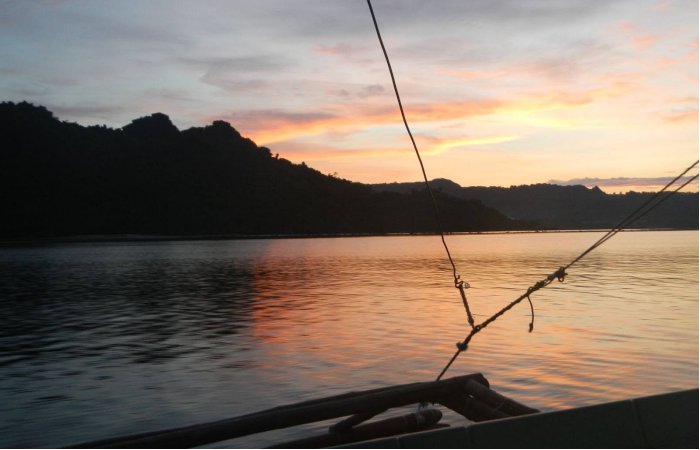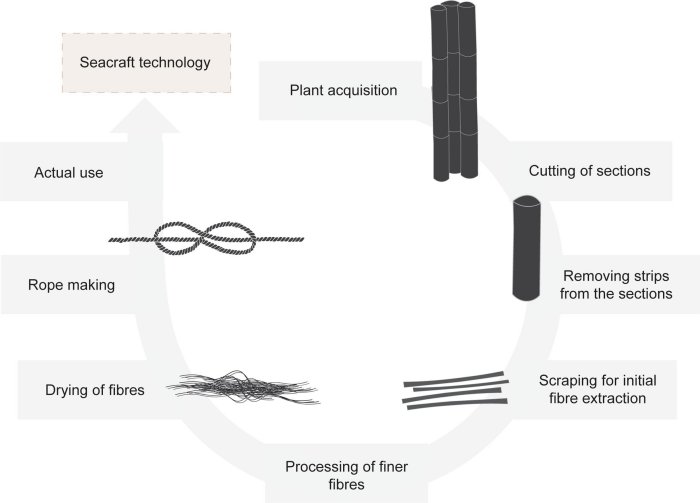Conny Waters – AncientPages.com – The ancient peoples of the Philippines and Island Southeast Asia (ISEA) may have developed advanced boat-building skills and seafaring expertise tens of thousands of years ago, long before explorers like Magellan, Zheng He, or even the Polynesians.
New archaeological evidence suggests that ancient inhabitants of the Philippines and Island Southeast Asia had the advanced plant-working technology needed for sophisticated boat building and open-sea fishing. Credit: Alfred Pawlik
A recent study by researchers Riczar Fuentes and Alfred Pawlik from Ateneo de Manila University challenges the common belief that technological advancements during the Paleolithic era were limited to Europe and Africa. Despite ISEA’s lack of land bridges or ice sheets connecting it to mainland Asia, evidence suggests early human habitation in these regions.
The mystery of how these ancient peoples managed daring ocean voyages persists due to the scarcity of organic materials like wood and fiber in archaeological records. However, sites in the Philippines, Indonesia, and Timor-Leste are now offering compelling evidence that these early seafarers possessed technological capabilities similar to much later civilizations. Microscopic examination of stone tools from sites dating back around 40,000 years reveals traces of plant processing for extracting fibers crucial for making ropes, nets, and bindings necessary for boat construction and open-sea fishing.
Additionally, archaeological findings in Mindoro and Timor-Leste include remains of deep-sea fish such as tuna and sharks alongside fishing tools like hooks, gorges, and net weights. These discoveries highlight a sophisticated level of maritime technology among ancient ISEA communities.
“The remains of large predatory pelagic fish in these sites indicate the capacity for advanced seafaring and knowledge of the seasonality and migration routes of those fish species,” the researchers said in their paper. Meanwhile, the discovery of fishing implements “indicates the need for strong and well-crafted cordage for ropes and fishing lines to catch the marine fauna.”
This body of evidence suggests that ancient seafarers likely constructed sophisticated boats using organic composite materials, held together with plant-based ropes. This same rope technology was also employed for open-sea fishing. If this is accurate, then prehistoric migrations across Island Southeast Asia (ISEA) were not conducted by passive sea drifters on flimsy bamboo rafts but by highly skilled navigators equipped with the necessary knowledge and technology to traverse vast distances and reach remote islands over deep waters.
Evidence of plant-working technology in ancient human habitations across Island Southeast Asia suggests that the prehistoric peoples of the Philippines and their neighbors possessed both sophisticated seacraft and advanced nautical skills. Credit: Fuentes and Pawlik, 2025
Years of fieldwork on Ilin Island, Occidental Mindoro, inspired researchers to explore this topic further and test their hypothesis. Collaborating with naval architects from the University of Cebu, they have recently initiated the First Long-Distance Open-Sea Watercrafts (FLOW) Project. The project’s goal is to test raw materials likely used in the past and design and evaluate scaled-down seacraft models.
See also: More Archaeology News
The presence of such advanced maritime technology in prehistoric ISEA underscores the ingenuity of early Philippine peoples and their neighbors. Their boat-building expertise probably established the region as a hub for technological innovation tens of thousands of years ago, laying the groundwork for maritime traditions that continue to thrive today.
The study was published in the Journal of Archaeological Science: Reports
Written by Conny Waters – AncientPages.com Staff Writer










